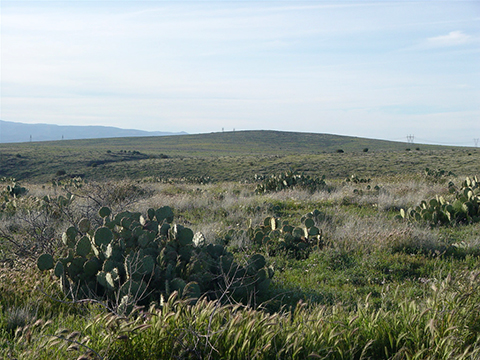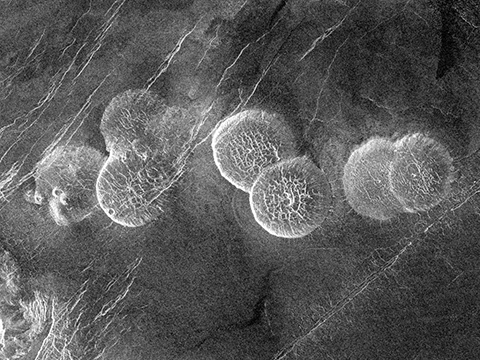Prelude
Volcanic rocks are named after Vulcan, the Roman god of fire (no relation to this Vulcan), and form as magmas cool and crystallize quickly at or near the surface. Depending on various factors (like composition, the presence of water, etc.), magmas can erupt with a distinctive style to form different types of volcanoes. Today, we will explore the nature of a variety of volcano types and learn why they look and erupt so differently, both here on Earth and around the Solar System. As we will see in coming weeks, many of these volcano types are present on other planetary bodies as well.
|
Figure 7-1. Volcanoes of the Solar System. At left, the Joes Hill shield volcano in central Arizona on Earth. At right: a Magellan radar image of the "pancake" lava domes of Alpha Regio, Venus (courtesy of NASA/JPL-Caltech). Remember to click on the highlighted images to see larger versions. |
|
What Will You Do Today?
|
Learn about some of the Solar System's volcanoes and volcanic processes, including use of geochemical data and geologic maps |
A. Volcanism Review - Get familiar with the main characteristics of different volcano types
B. Geochemical Analysis - Classify and interpret different types of volcanic rocks based on their major element geochemistry
C. Hawaiian Volcanoes - Read and interpret a geologic map of the island of Hawaii and its large volcanoes
D. The Solar System's Largest Volcano - Learn about Olympus Mons, the largest volcano in our Solar System


